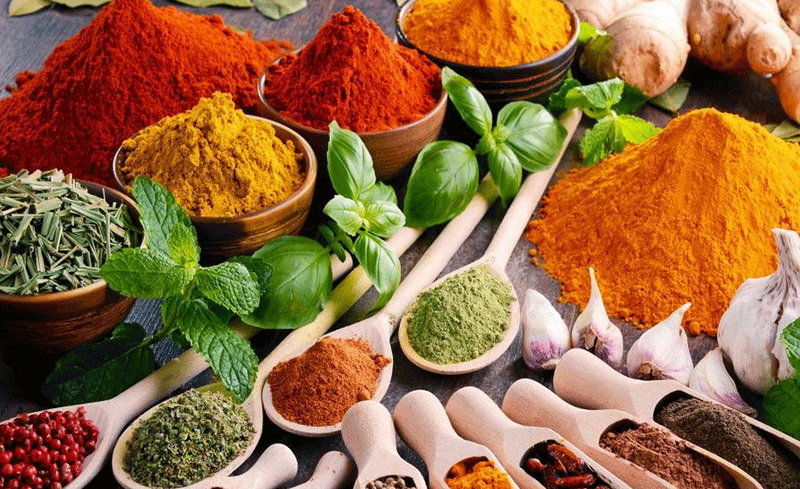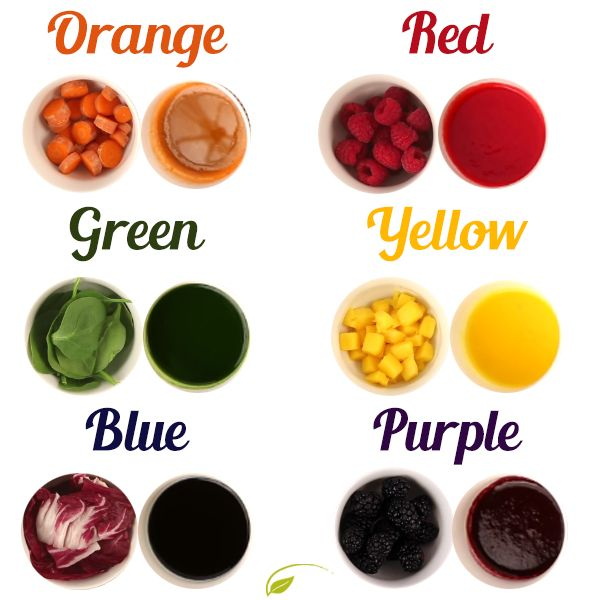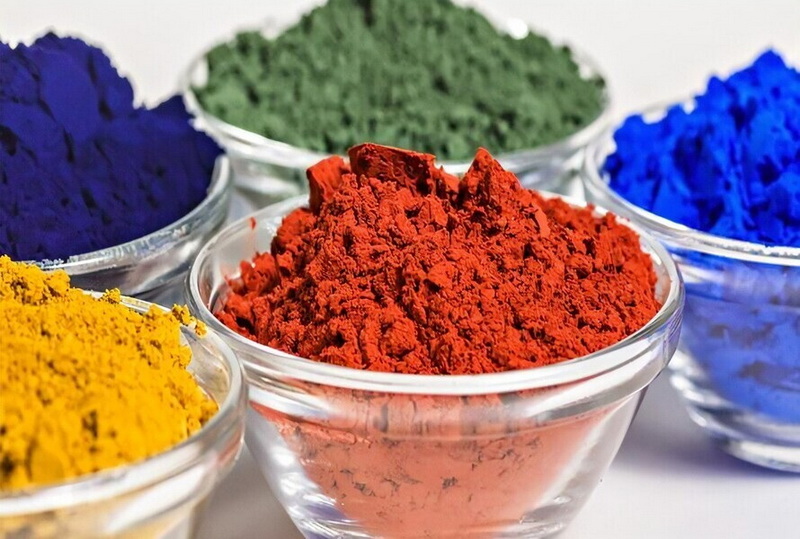Content Menu
● The Growing Demand for Natural Food Colors
● Key Benefits of Using Natural Food Colors
>> Health and Safety
>> Clean Label Appeal
>> Environmental Sustainability
>> Versatility
● Overview of the Natural Food Colors Industry in Ottawa
● Top Natural Food Colors Manufacturers and Suppliers in Ottawa
>> Ottawa Natural Extracts Ltd.
>> PureColor Solutions
>> GreenLeaf Ingredients Inc.
>> BioHerb Ottawa
>> ColorNature Ottawa
● How Natural Food Colors Are Made
● How to Choose the Right Natural Food Colors Manufacturer or Supplier
● Trends and Innovations in Natural Food Colors
>> Clean Label Movement
>> Plant-Based Innovations
>> Improved Stability
>> Sustainable Sourcing
>> Functional Colors
>> Regulatory Harmonization
● Applications of Natural Food Colors
● Challenges Facing Natural Food Colors Manufacturers
● Conclusion
● FAQ
>> 1. What are natural food colors?
>> 2. Why should I choose natural food colors over synthetic dyes?
>> 3. How do I ensure the quality of natural food colors?
>> 4. Can natural food colors be customized for specific applications?
>> 5. Are natural food colors suitable for all types of food products?
In today's health-conscious world, the demand for natural food colors has soared, especially among food and beverage companies striving to meet consumer expectations for clean label products. Ottawa, as a vibrant hub for food innovation, is home to several leading natural food colors manufacturers and suppliers. These companies play a crucial role in providing high-quality, plant-based colorants to enhance the appearance and appeal of foods without compromising on safety or sustainability.
This article explores the top natural food colors manufacturers and suppliers in Ottawa, delving into their product offerings, manufacturing processes, and the latest trends in the natural food coloring industry. Whether you are a brand owner, wholesaler, or producer seeking reliable OEM partners, this comprehensive guide will help you navigate the dynamic landscape of natural food colors in Ottawa.

The Growing Demand for Natural Food Colors
The global shift toward healthier lifestyles has significantly impacted the food industry. Consumers are increasingly scrutinizing ingredient lists, preferring products free from artificial additives and synthetic dyes. This trend has fueled the rise of natural food colors manufacturers and suppliers, who now cater to a vast array of industries, including food and beverage, confectionery, dairy products, bakery, nutraceuticals, and pet food.
Natural food colors are derived from fruits, vegetables, herbs, and other plant sources, offering a safe and sustainable alternative to synthetic colorants. The appeal of these natural pigments is not only their vibrant hues but also their association with health benefits and environmental responsibility. As consumers become more informed, the demand for transparency and traceability in ingredient sourcing has also increased, pushing manufacturers to adopt more sustainable and ethical practices.
Key Benefits of Using Natural Food Colors
Health and Safety
Natural food colors are non-toxic and pose minimal health risks compared to synthetic dyes, which have been linked to allergies and other adverse effects. Many synthetic dyes have faced scrutiny over potential links to hyperactivity in children and other health concerns, prompting regulatory bodies and consumers alike to favor natural alternatives.
Clean Label Appeal
Products colored with natural food colors are more appealing to consumers seeking transparency and simplicity in ingredient lists. Clean labels, which highlight recognizable and minimally processed ingredients, are a growing trend that natural food colors perfectly complement.
Environmental Sustainability
Sourcing colors from renewable plant materials reduces the environmental impact associated with synthetic dye production. The cultivation of natural color sources often supports biodiversity and can be integrated into sustainable agricultural practices, further enhancing their eco-friendly profile.
Versatility
Natural food colors are available in a wide range of hues, making them suitable for various applications across the food industry. From vibrant reds and yellows to deep greens and purples, these colors can be tailored to meet the aesthetic needs of diverse food products.
Overview of the Natural Food Colors Industry in Ottawa
Ottawa has emerged as a key center for natural food colors manufacturers and suppliers, thanks to its strong agricultural base, research institutions, and a thriving food processing sector. The city offers a supportive ecosystem for innovation, making it an ideal location for companies specializing in plant-based ingredients.
Ottawa's manufacturers benefit from proximity to raw material sources, access to cutting-edge extraction technologies, and a skilled workforce dedicated to quality and safety. These factors combine to position Ottawa as a leader in the natural food colors market, attracting both domestic and international clients.
Top Natural Food Colors Manufacturers and Suppliers in Ottawa
Ottawa Natural Extracts Ltd.
Ottawa Natural Extracts Ltd. is renowned for its extensive range of natural food colors derived from fruits, vegetables, and herbs. The company emphasizes quality, safety, and sustainability in its manufacturing processes. Their product portfolio includes beetroot red, turmeric yellow, spirulina blue, carrot orange, and many other vibrant hues. With certifications such as organic, non-GMO, and allergen-free, Ottawa Natural Extracts Ltd. ensures that their products meet the highest industry standards.
Their OEM services offer custom formulations and private labeling, allowing brands to create unique products that align with their identity and market demands. The company invests heavily in research and development to improve color stability and expand their product offerings.
PureColor Solutions
PureColor Solutions specializes in innovative natural food colors for the beverage and confectionery industries. Their advanced extraction techniques ensure vibrant, stable colors suitable for a variety of applications. Their product range includes anthocyanin-based reds, chlorophyll greens, and paprika orange, all produced with a focus on eco-friendly sourcing and minimal processing.
PureColor Solutions also provides technical assistance for product development, helping clients optimize color performance and stability in their formulations. Their commitment to sustainability and quality has earned them a solid reputation among food manufacturers.
GreenLeaf Ingredients Inc.
GreenLeaf Ingredients Inc. is a trusted supplier of plant-based colorants to food manufacturers and wholesalers. Their products are known for their purity and consistency, with offerings such as spinach green, safflower yellow, and elderberry purple. The company holds certifications including Kosher, Halal, and vegan, catering to diverse market requirements.
GreenLeaf Ingredients Inc. offers custom blending and packaging services, enabling brands to tailor colors to specific needs. Their strong focus on quality assurance and customer service makes them a preferred partner for many food producers.
BioHerb Ottawa
BioHerb Ottawa combines traditional herbal expertise with modern extraction technology to produce high-quality natural food colors. Their product range includes hibiscus red, matcha green, and annatto yellow, all developed with an emphasis on color stability and application versatility.
The company invests in research and development to continuously innovate and improve their offerings. Rigorous testing ensures purity and safety, making BioHerb Ottawa a reliable supplier for brands seeking natural, effective color solutions.
ColorNature Ottawa
ColorNature Ottawa is dedicated to providing clean label solutions for food and beverage brands. Their natural food colors are free from artificial additives and preservatives, with products such as carrot orange, grape skin purple, and turmeric yellow. The company is committed to ethical sourcing and environmental stewardship, aligning with the values of modern consumers.
ColorNature Ottawa offers turnkey OEM solutions for brand owners, including custom formulations, packaging, and technical support. Their holistic approach helps clients bring vibrant, natural products to market efficiently.

How Natural Food Colors Are Made
Natural food colors manufacturers and suppliers use advanced extraction and purification techniques to isolate pigments from plant materials. The process typically involves several key steps:
1. Selection of Raw Materials: High-quality fruits, vegetables, or herbs are carefully sourced, often from organic or sustainably managed farms to ensure purity and environmental responsibility.
2. Extraction: Using food-grade solvents such as water or ethanol, pigments are extracted from the raw materials. Techniques vary depending on the pigment type, with methods designed to maximize yield while preserving color integrity.
3. Purification: Unwanted substances are removed to concentrate the pigment, resulting in a pure, vibrant colorant suitable for food applications.
4. Formulation: The colorant is blended and standardized to ensure consistent performance, stability, and compatibility with different food matrices.
5. Quality Control: Rigorous testing is conducted to verify purity, safety, and compliance with regulatory standards. Stability tests ensure the color maintains its vibrancy throughout the product's shelf life.
This meticulous process ensures that natural food colors meet the high expectations of both manufacturers and consumers.
How to Choose the Right Natural Food Colors Manufacturer or Supplier
Selecting the ideal partner among natural food colors manufacturers and suppliers in Ottawa requires careful consideration of several factors:
- Product Quality: Look for suppliers with stringent quality control and certifications such as organic, non-GMO, allergen-free, Kosher, or Halal. These certifications demonstrate a commitment to safety and consumer trust.
- Customization: Assess the ability to provide custom formulations or OEM services. A supplier who can tailor products to your specific needs offers a competitive advantage.
- Technical Support: Choose suppliers who offer guidance on product application, color stability, and regulatory compliance. This support can be invaluable during product development.
- Sustainability: Consider companies with ethical sourcing and eco-friendly practices. Sustainability is increasingly important to consumers and can enhance brand reputation.
- Reputation: Seek out manufacturers with positive industry reviews, client testimonials, and a proven track record of reliability.
Building a strong partnership with the right supplier can help brands innovate, reduce time to market, and meet consumer demands effectively.
Trends and Innovations in Natural Food Colors
The natural food colors industry is rapidly evolving, driven by consumer preferences and technological advancements. Key trends include:
Clean Label Movement
Brands are increasingly adopting natural food colors to meet the demand for clean label products. This movement emphasizes simplicity, transparency, and recognizable ingredients, making natural colorants a perfect fit.
Plant-Based Innovations
Manufacturers are exploring new plant sources, such as microalgae, edible flowers, and exotic fruits, to expand the color palette. These novel sources offer unique hues and functional benefits, opening new possibilities for product differentiation.
Improved Stability
Advances in encapsulation, microencapsulation, and formulation techniques are enhancing the stability of natural colorants. These innovations allow natural colors to withstand processing conditions such as heat, light, and pH changes, broadening their application scope.
Sustainable Sourcing
There is a growing emphasis on traceability and sustainability in the supply chain. Many suppliers invest in responsible sourcing initiatives, ensuring that raw materials are harvested ethically and with minimal environmental impact.
Functional Colors
Some natural food colors now offer additional health benefits, such as antioxidant properties, making them attractive as multifunctional ingredients in functional foods and nutraceuticals.
Regulatory Harmonization
Efforts are underway globally to harmonize regulations concerning natural food colors, simplifying market access and ensuring consistent safety standards.
Applications of Natural Food Colors
Natural food colors find applications across a wide range of food and beverage categories:
- Beverages: Juices, soft drinks, energy drinks, and alcoholic beverages benefit from vibrant, natural hues that appeal to health-conscious consumers.
- Dairy Products: Yogurts, ice creams, and cheeses use natural colors to enhance visual appeal without compromising taste or safety.
- Bakery: Cakes, pastries, and bread incorporate natural colors to create eye-catching products that align with clean label trends.
- Confectionery: Candies, chocolates, and gums use natural pigments to replace synthetic dyes, meeting consumer demand for natural ingredients.
- Nutraceuticals: Supplements and functional foods utilize natural colors that are compatible with health-focused formulations.
- Pet Food: Natural colors improve the appearance of pet food products while ensuring safety and compliance with pet health standards.
Challenges Facing Natural Food Colors Manufacturers
Despite their advantages, natural food colors manufacturers and suppliers face several challenges:
- Stability Issues: Natural pigments can be sensitive to heat, light, and pH, requiring advanced formulation techniques to maintain color integrity.
- Cost: Natural colors can be more expensive than synthetic alternatives due to raw material sourcing and processing complexities.
- Supply Chain Variability: Agricultural factors such as weather and seasonality can affect raw material availability and quality.
- Regulatory Compliance: Navigating diverse regulations across different markets requires expertise and adaptability.
Manufacturers in Ottawa are actively addressing these challenges through innovation, strategic sourcing, and collaboration with research institutions.
Conclusion
The demand for natural food colors continues to rise as consumers and food brands prioritize health, safety, and sustainability. Ottawa stands out as a center for innovation, with its leading natural food colors manufacturers and suppliers offering a diverse range of high-quality, plant-based colorants. By partnering with reputable suppliers in Ottawa, food industry professionals can ensure their products meet the highest standards for quality and consumer appeal.
With ongoing advancements in extraction technology, formulation, and sustainable sourcing, the natural food colors industry in Ottawa is well-positioned to meet the evolving needs of global markets. Whether you are a brand owner, wholesaler, or manufacturer, collaborating with Ottawa's top suppliers can help you deliver vibrant, clean label products that resonate with today's discerning consumers.

FAQ
1. What are natural food colors?
Natural food colors are pigments derived from plant, fruit, or vegetable sources. They are used to enhance the appearance of food and beverages without synthetic additives.
2. Why should I choose natural food colors over synthetic dyes?
Natural food colors are safer, non-toxic, and align with clean label trends. They are less likely to cause allergic reactions and are environmentally friendly.
3. How do I ensure the quality of natural food colors?
Choose natural food colors manufacturers and suppliers with certifications such as organic, non-GMO, and allergen-free. Reputable suppliers conduct rigorous quality control and testing.
4. Can natural food colors be customized for specific applications?
Yes, many manufacturers offer OEM services, allowing for custom formulations tailored to specific product requirements or branding needs.
5. Are natural food colors suitable for all types of food products?
Natural food colors are versatile and can be used in a wide range of applications, including beverages, bakery, dairy, confectionery, and more. However, stability and compatibility should be tested for each application.

 English
English 




























